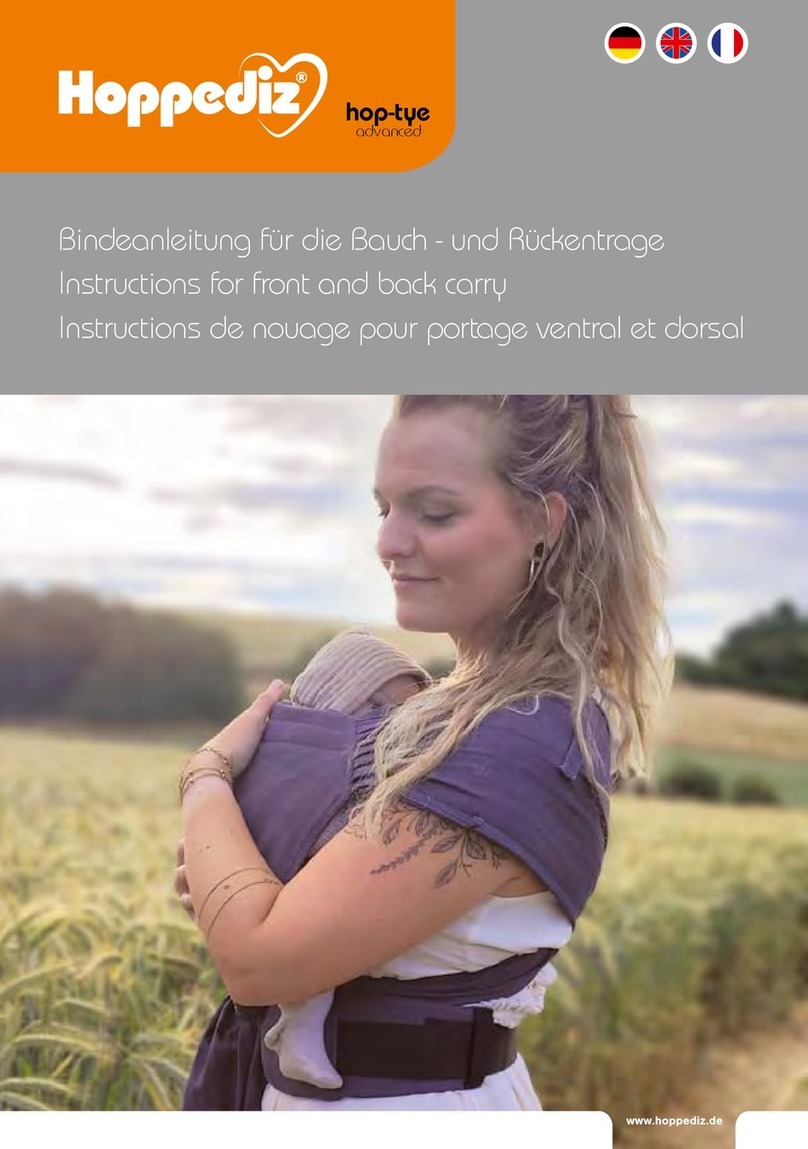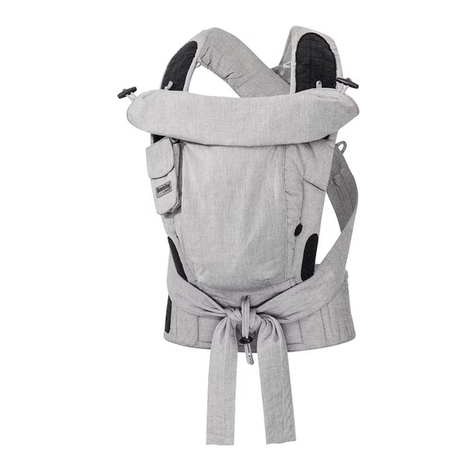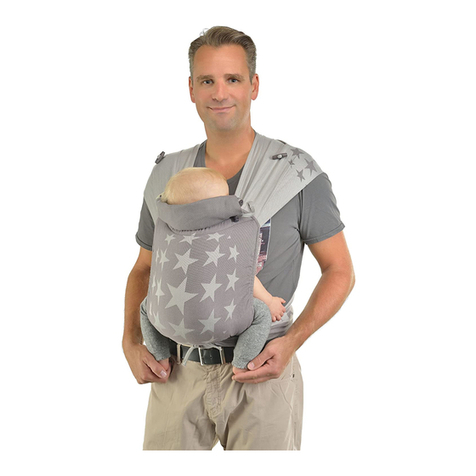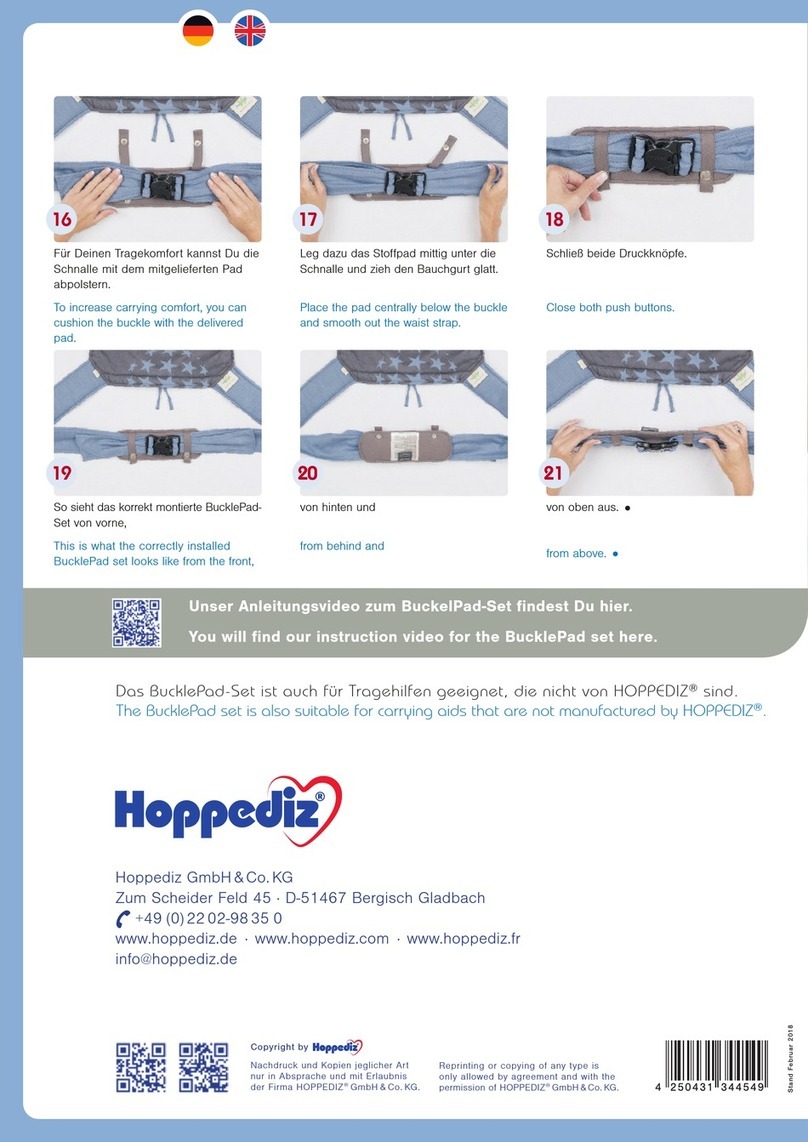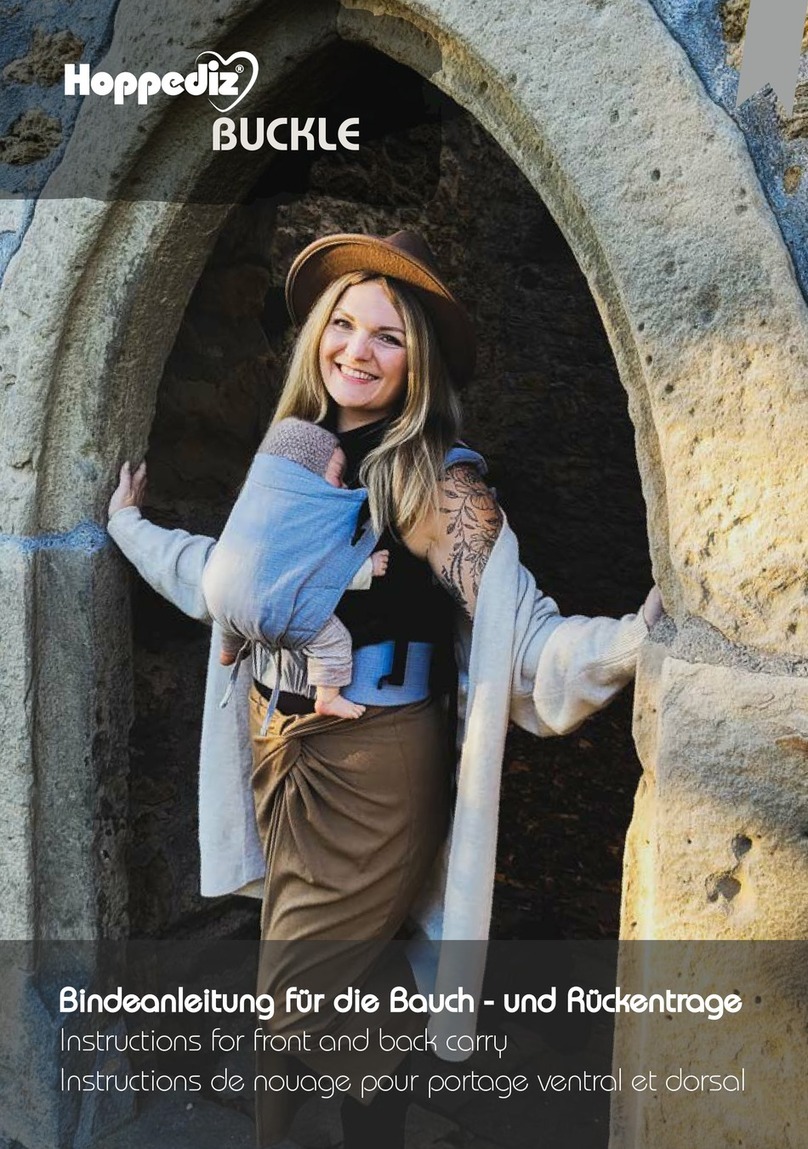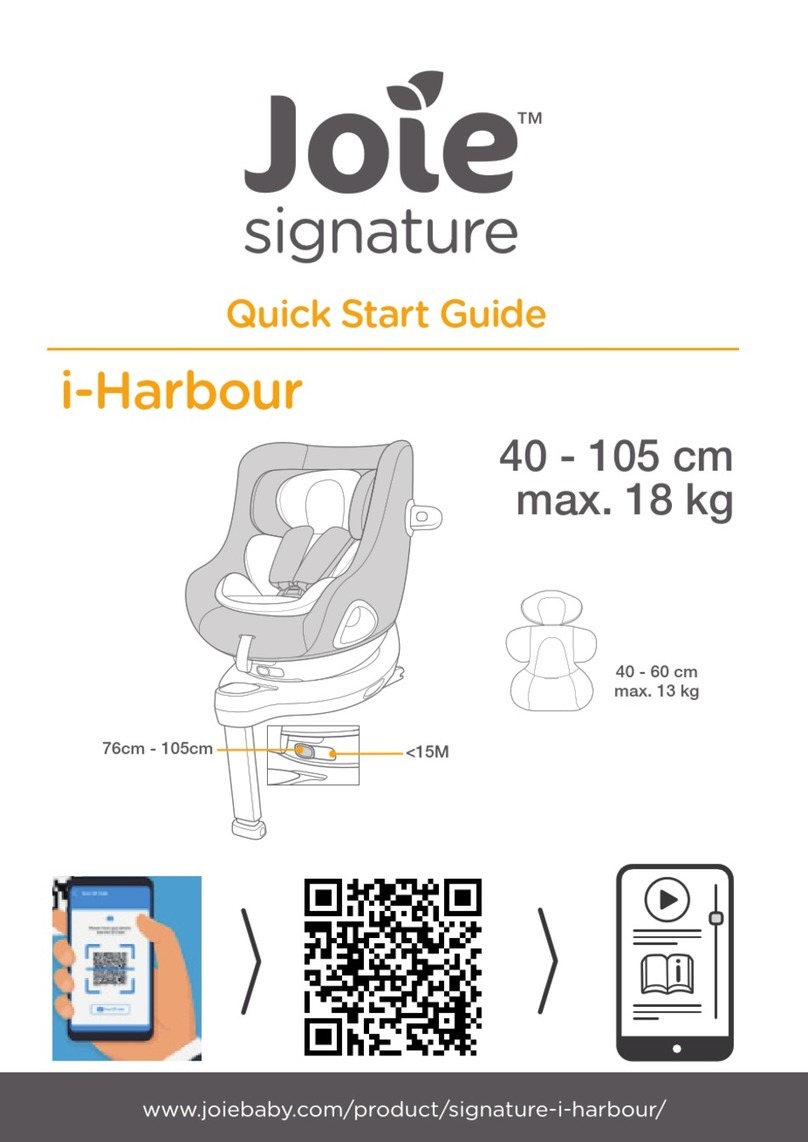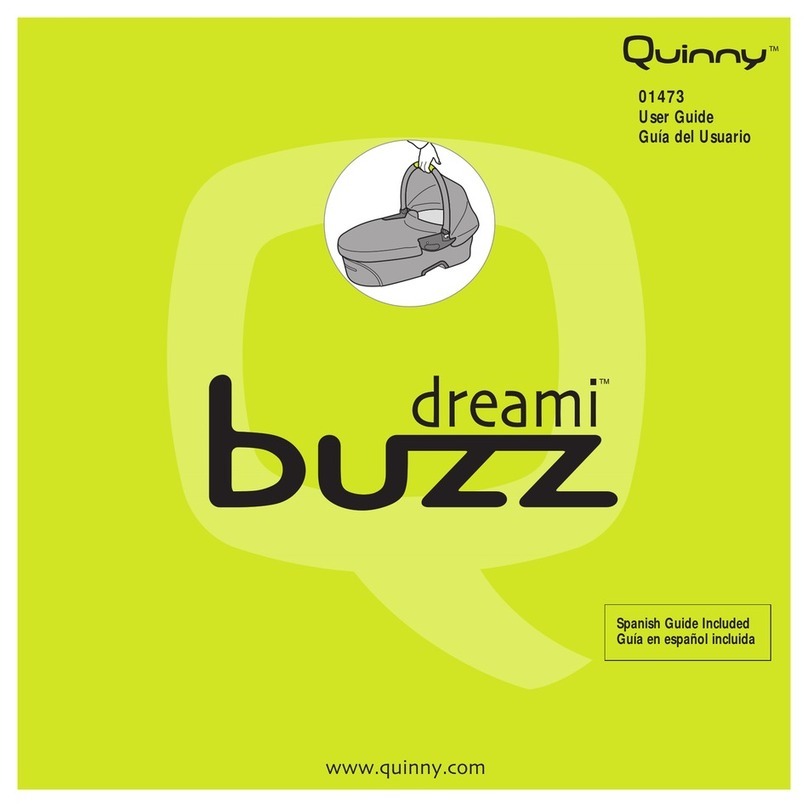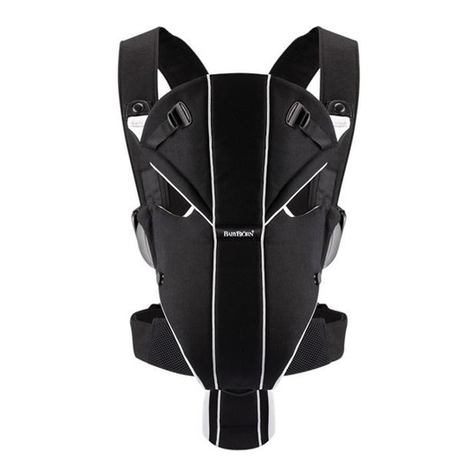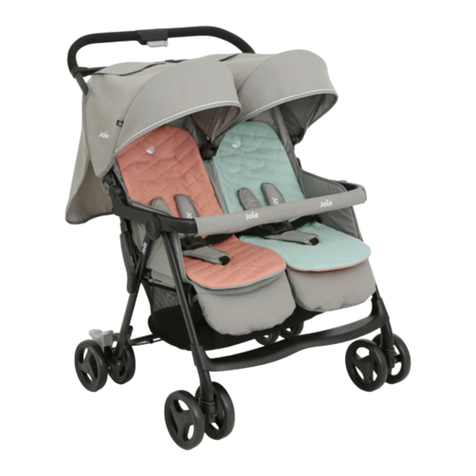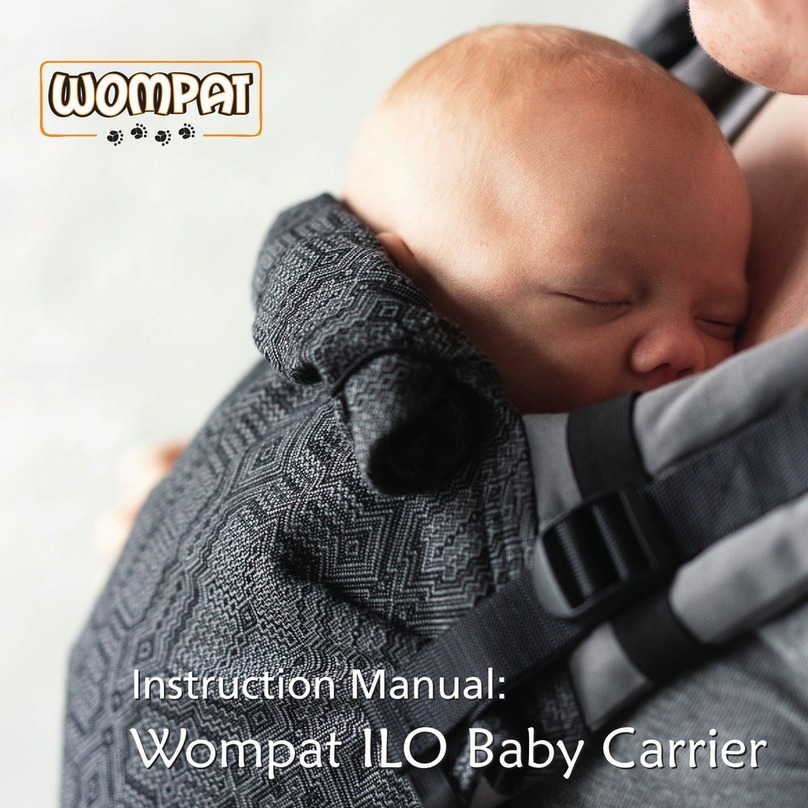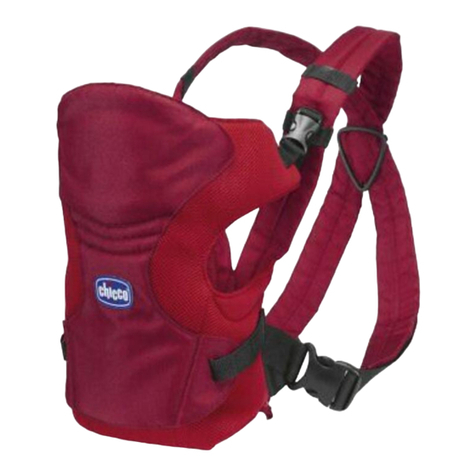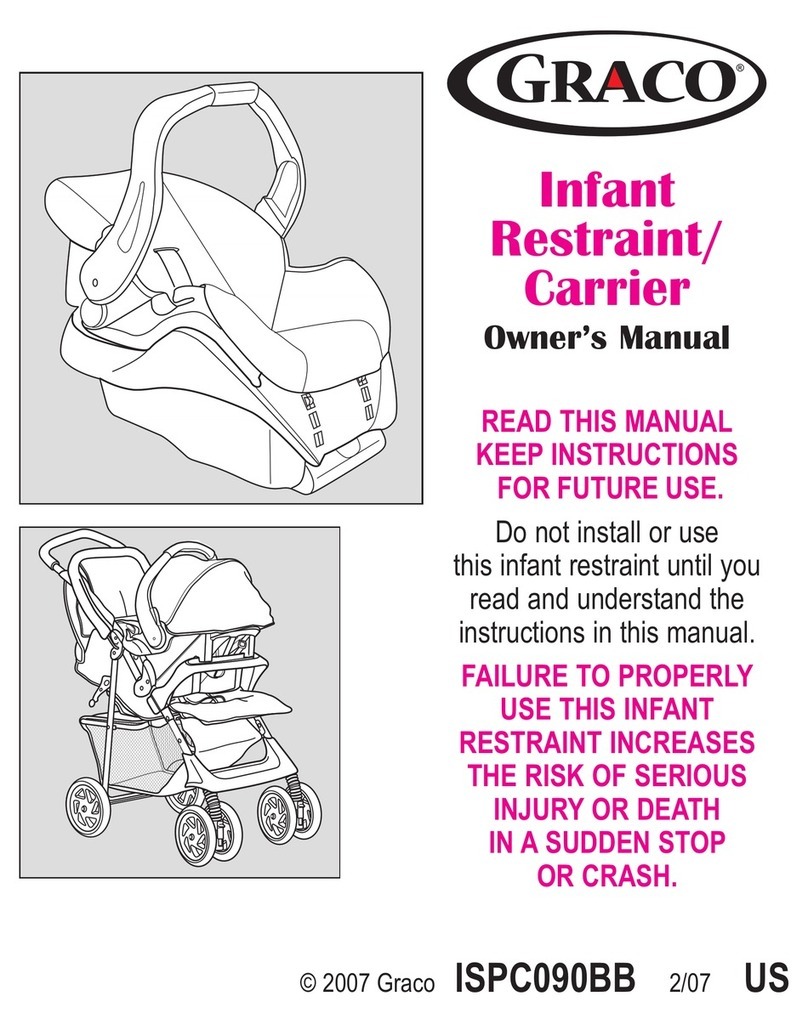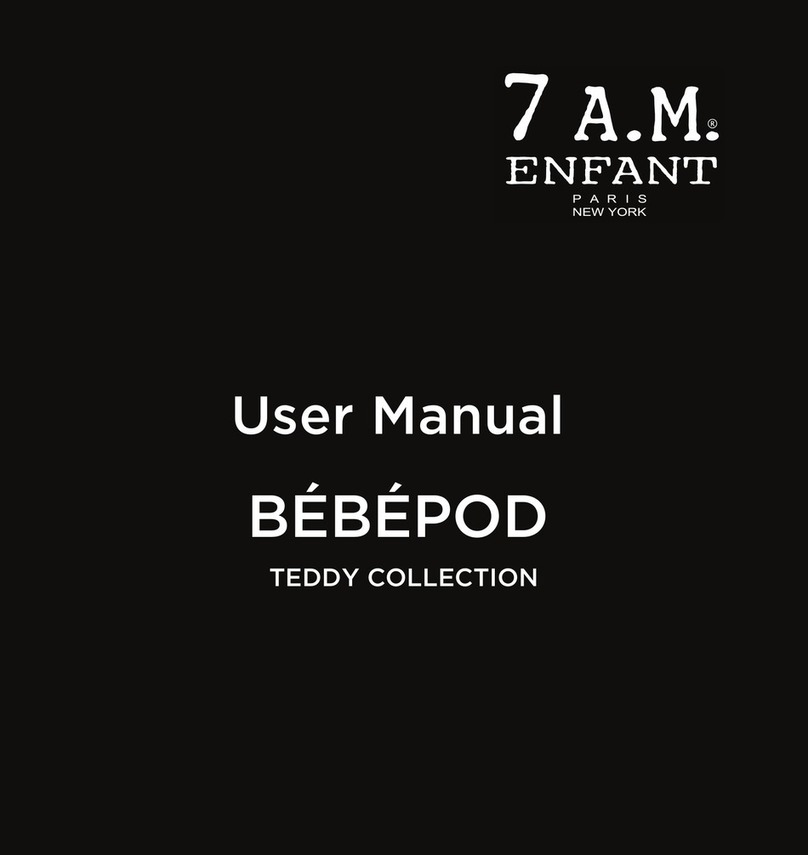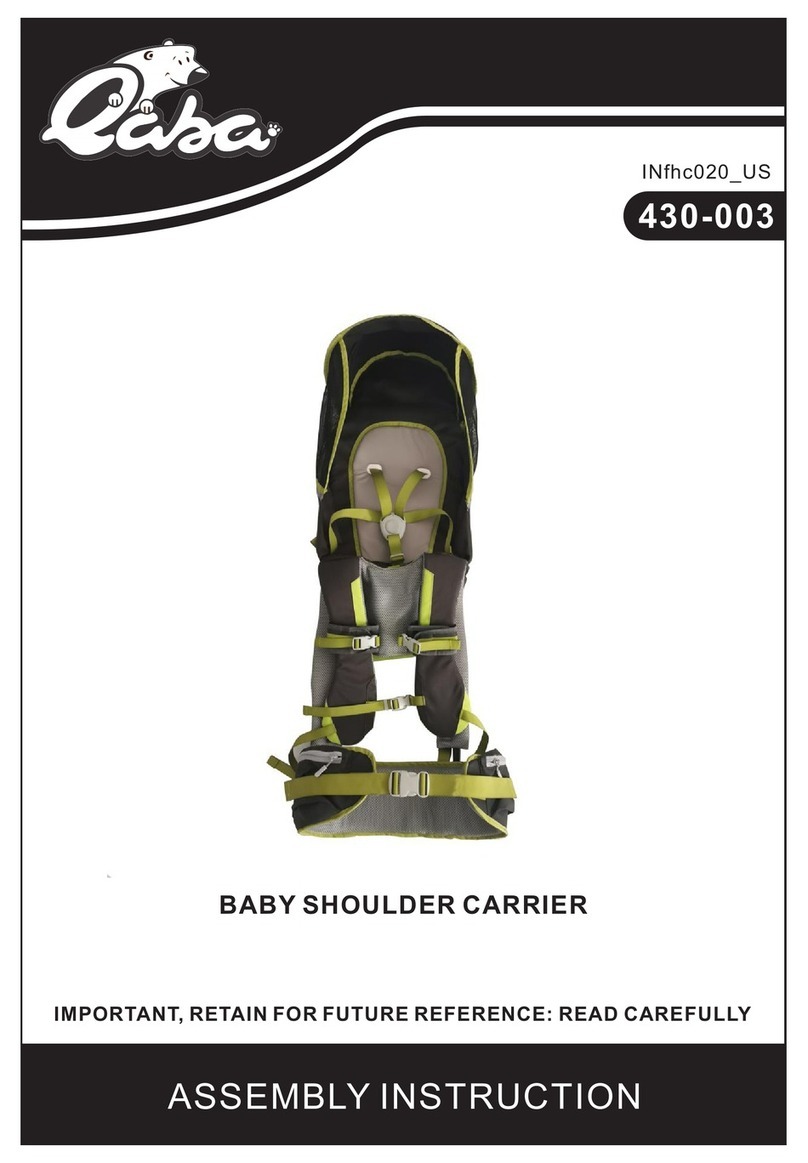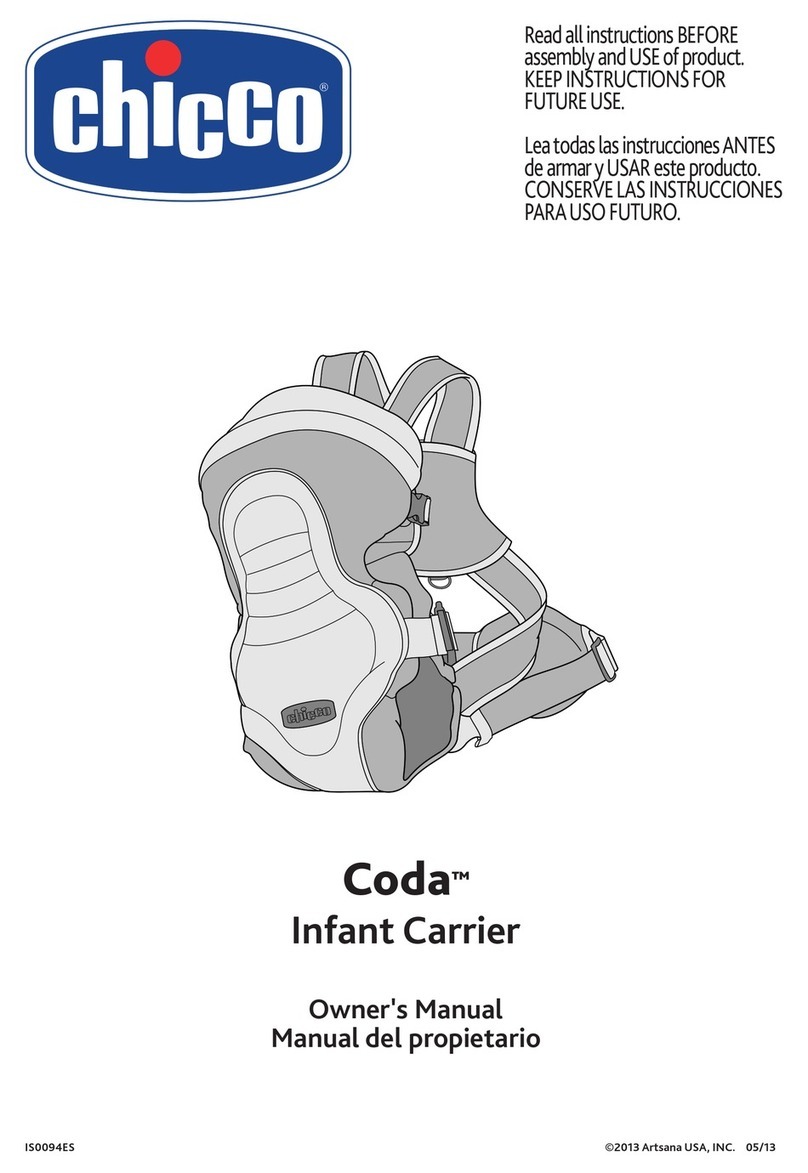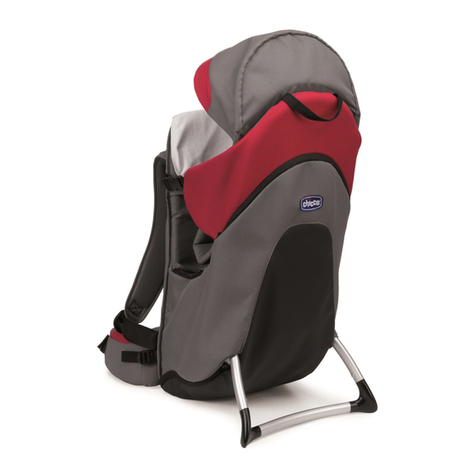
2
Warning!
The oppediz elastic sling
is suitable for:
Care:
without motif: washable up to 60°C
with motif: washable up to 40°C
no optical brighteners
The oppediz elastic sling
is not suitable for:
Please read these instructions thoroughly before
using the elastic sling.
Always watch your child and ensure that mouth and
nose are not covered.
Get advice from a health professional if you want to
use this product for a premature baby, one with a low
birth weight as well as a sic ly one.
Ensure that your child’s chin does not rest on
his/her chest since this can cause respiratory problems
and suffocation.
Ensure that your child is sitting safely in the elastic
sling and that there is no danger of falling out.
Start with short carrying times and increase it
gradually in order to have your muscles get used to
these new movements. Principally, there is no limit in
time regarding the carrying period.
Pay attention to ris s in the home environment, e.g.
heat sources, spilling of hot beverages, chemical agents.
Only use the elastic sling for the number of children
it is provided for.
Never use more than one baby carrier at the same
time.
Your movements and the movements of your child
can impact your balance.
You should always be aware of a higher ris that
your child might fall out of the elastic sling as soon as
it becomes more active.
So please be cautious when leaning or bending
forward or to the side.
Don’t carry your child if your balance or mobility is
impaired by drugs or illness.
The elastic sling is not suitable for sports activities
li e running, bi ing, swimming and s iing.
Do not carry your child while coo ing or cleaning
the house or during other activities involving heat
sources or chemical agents.
Don’t use the elastic sling in or on (motor-driven)
vehicles.
Please chec the elastic sling at regular intervals
for signs of wear or damage (e.g. torn fabric, damaged
seams) and do not carry your child in a damaged sling.
When not in use, eep the elastic sling out of the
reach of children and store it, e.g., in a sling bag or in
a wardrobe.
Please ma e sure that your baby is securely posi-
tioned in the sling according to the tying instructions
and that the not is held firmly in place.
Never leave your baby alone in the sling when you
do not carry her/him.
In case your little ones cannot hold their head by
themselves, we recommend to support your baby’s
head by pulling the sling edges over the bac of
his/her head.
Your child must face towards you until they can
hold their head upright.
Ensure a proper placement of your child in the
product including leg placement.
4,4 – 19,8

